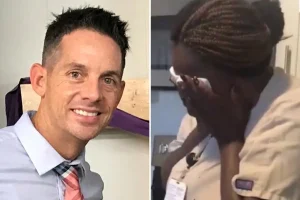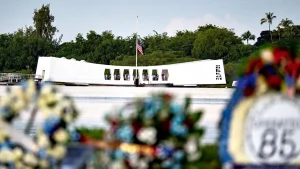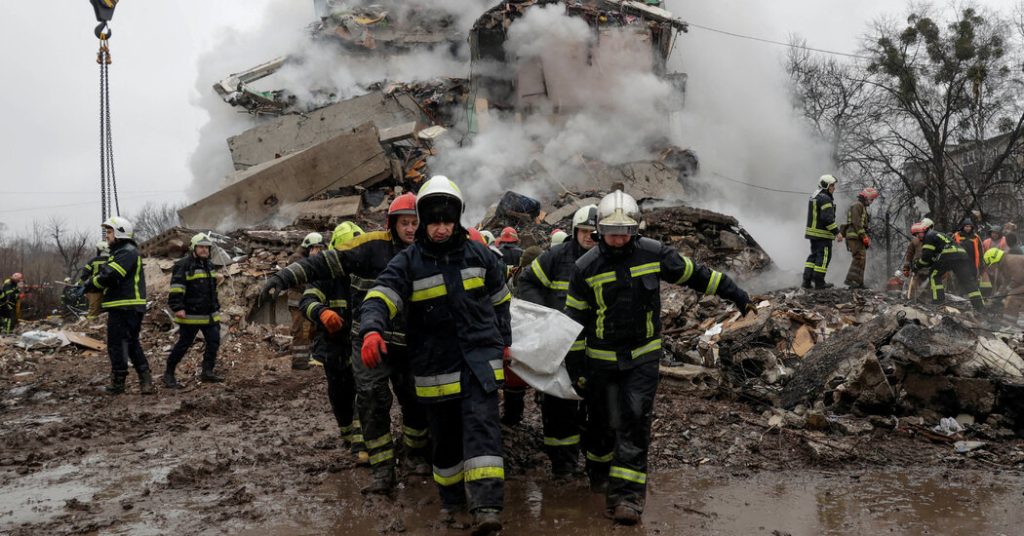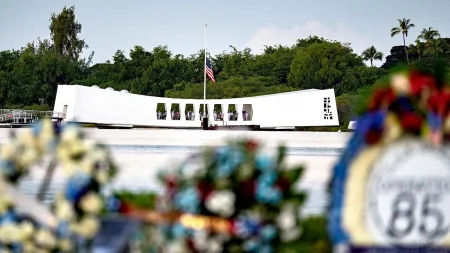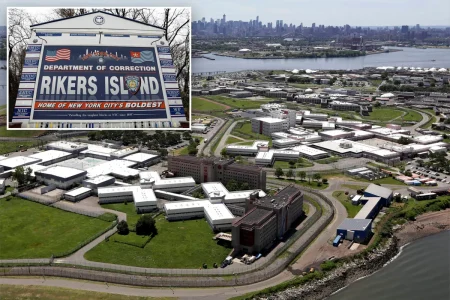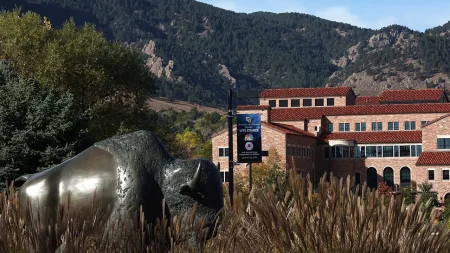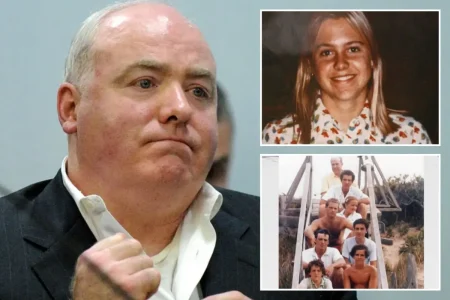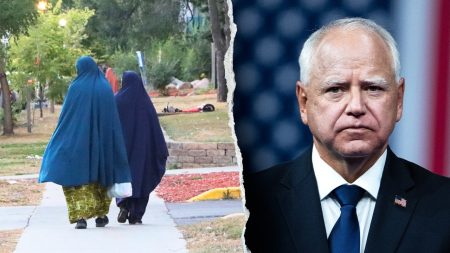The war in Ukraine, now approaching its fourth year, showed its unrelenting cruelty once again with two devastating airstrikes this past Saturday that left at least 18 civilians dead. These losses mark one of the war’s deadliest days for civilians this year and a stark reminder of the enduring toll of this conflict.
It all began on a somber Saturday morning in Poltava, a central Ukrainian city far from the active front lines. A Russian missile tore into a residential building, killing 14 people, including two children, according to local emergency services. Videos captured the eerie aftershock—a section of the building lay in ruins, everyday items like clothes and documents scattered around the rubble, bearing a mute testimony to the lives disrupted in an instant.
Poltava, which many had considered a relatively safe city, once removed from the worst of the fighting, has increasingly found itself under attack. The assault not only left physical devastation but also shattered the psychological sense of security its residents had clung to. Denys Kliap, the director of Free and Unbreakable, a volunteer emergency response group, described arriving at the scene to utter chaos. “I heard incredible screams from people,” he recalled, his voice still thick with emotion. Survivors trapped under debris shouted for help; some managed to be rescued, while others were not as lucky. Emergency services have since pulled 22 people from the rubble, but as the rescue operations continue, the grim task of recovering bodies goes on.
For many Poltava residents, Saturday’s attack rekindled haunting memories of a similar tragedy just months ago. In September, a missile strike on a military academy killed 50 people, many of them young students. These recurring blows have left the people of Poltava in a state of persistent fear. “For the last year, the feeling of danger among citizens of Poltava has increased,” Kliap said.
And then came the second strike of the day, hours later in Sudzha, a much smaller town near the Ukrainian border but located in Russian territory. This area, captured by Ukrainian forces in a bold cross-border operation last summer, has since seen fierce fighting. The strike targeted a boarding school where around 90 Russian civilians—displaced by the nearby battles—had sought shelter. Here, four people lost their lives, and ten others were injured.
President Volodymyr Zelensky of Ukraine painted a grim picture of the aftermath, sharing images of the still-smoking ruins of the boarding school and survivors trembling, covered in dust and disbelief. He pointed out a tragic irony in the attack—those killed or injured were Russia’s “own civilians.” “They destroyed the building even though dozens of civilians were there,” Zelensky said. This struck a chilling note about the sheer indiscriminate nature of an ever-merciless war.
The Russian Defense Ministry, instead of commenting on its missile strike on Poltava, accused Kyiv of orchestrating the Sudzha attack, an assertion that could not be independently verified. As is often the case in this fog of war, narratives collide, and blaming the other side becomes strategically convenient.
Saturday’s assaults reflected the horrifyingly widespread reach of this conflict. Poltava, tens of miles removed from the front line, and Sudzha, near contested areas in Russia, became painful reminders that no one is truly safe. The effects of long-range drones, glide bombs, and missile attacks have blurred the line between battlefield zones and civilian havens. Cities previously considered relatively secure, such as Lviv in western Ukraine and Poltava in the heartland, now face frequent aerial assaults. In Ukraine’s capital, Kyiv, the once-rare sound of Russian drones slicing through the night sky has become a regular disturbance.
Statistics paint a grim picture of this war’s toll on civilians. Since Russia’s full-scale invasion began almost three years ago, more than 12,300 civilians have lost their lives, according to the United Nations. In 2022 alone, casualties rose sharply due to a surge in long-range weaponry targeting areas far from the front. The expansion of the battlefield, both in tactics and geography, has kept the suffering of ordinary people at the forefront.
For residents and volunteer responders like Kliap, the psychological trauma and physical devastation continue to mount. The images of Poltava’s ruined residential building and Sudzha’s obliterated boarding school will linger as yet another terrible chapter of this relentless war.
As Ukraine finds itself under nearly constant aerial assault, Zelensky has renewed calls for the West to deliver advanced air-defense systems to bolster civilian protection. Speaking on Sunday, he outlined the vast scale of the past week’s onslaught—close to 50 missiles, 660 attack drones, and over 760 glide bombs launched by Russia. “We need better protection,” Zelensky underscored, emphasizing not just military means but also stringent global sanctions against Russia.
While Ukraine grapples with regular attacks on its cities, civilians in Russian border areas like Kursk have increasingly found themselves caught in the crosshairs. Sudzha’s civilian deaths highlight the shifting dynamic of this war, as Ukrainian forces carry out attacks on military installations and infrastructure within Russian territory. This has led to a growing number of civilian casualties on both sides of the border, complicating the narrative and escalating the human cost.
The war has stretched long enough to deeply scar the lives of tens of thousands, with civilians often paying the heaviest price. The attacks on Saturday were not isolated incidents but a chilling representation of how far the cruelty of this conflict has permeated. Whether it is Poltava’s apartment building or Sudzha’s boarding school, destruction and death remain cruelly indiscriminate.
Yet amid the darkness, survivors, emergency responders, and communities press forward. Even amidst the rubble, there was something inherently human about the way neighbors, volunteers, and officials searched tirelessly for survivors or offered solace to the grieving. Each rescuer, like Kliap, faces a choice every day to act in defiance of despair, moving toward peril to help those in need.
As the war edges closer to its fourth year—with millions displaced, thousands killed, and countless lives disrupted—its shadows have only grown longer. What remains at the heart of it all are scenes like the ones in Poltava and Sudzha: of ordinary people enduring unspeakable tragedy in the face of forces far beyond their control. And yet, collectively, they serve as a stark reminder to the world of what exactly is at risk in this ongoing war—the fundamental sanctity of life, fragile and precious, amid chaos and ruin.
The lessons of this past weekend resonate grimly, even when surrounded by the geopolitical noise and the thunder of war machines. The war in Ukraine is not just a story of territories, alliances, and global power plays. It is, above all, a story of people—families broken, communities torn apart, and lives shattered, often in the blink of an eye. While governments and armies may frequently seek to shape the narrative, the voices of everyday people—like those who screamed from beneath Poltava’s rubble or fled the flames in Sudzha’s boarding school—cannot and should not be silenced. Their cries serve as urgent testimony to the enduring need for peace, justice, and accountability in a world that can no longer afford to look away.
